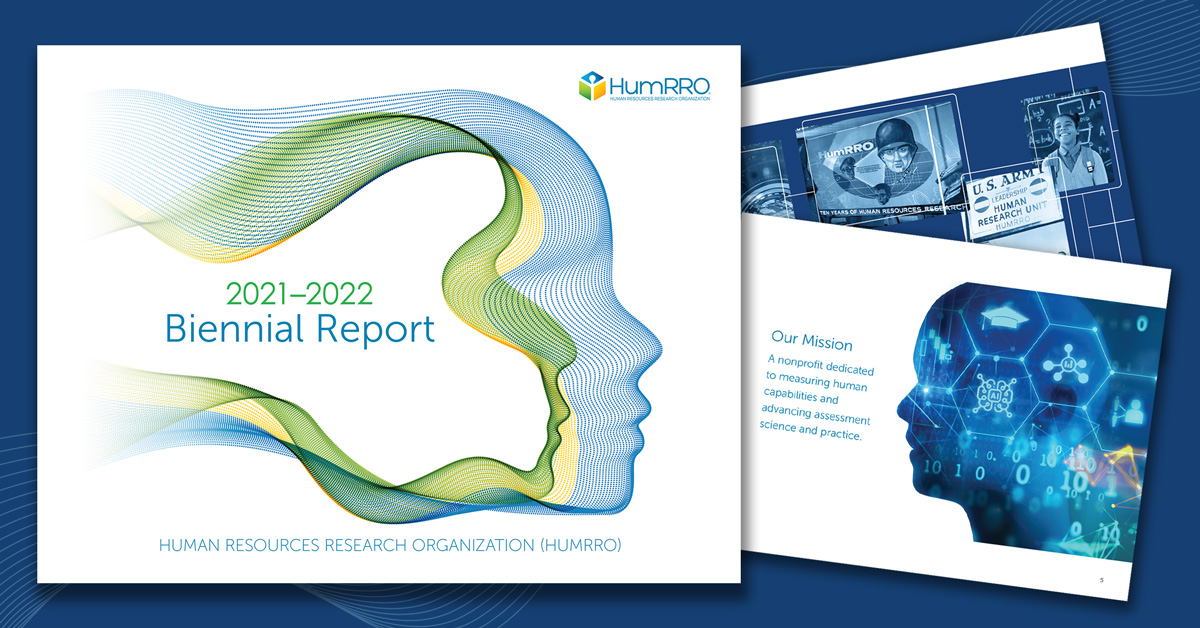Professional credentialing organizations face the challenge of meeting both industry and employer needs, as well as the needs of potential certificants across various organizations and jurisdictions. HumRRO has begun leveraging developments in natural language processing (NLP) in ways that can help credentialing organizations develop a more robust understanding of their industry, including the variety of occupations and target customers.
What is Natural Language Processing?
Simply put, NLP leverages the power of computers to operate on natural language data in ways that can inform many practical downstream applications. Using this approach, computers analyze, understand, and generate “natural language” akin to the speech and text that humans use to communicate.
How can NLP help credentialing organizations?
Traditionally, credentialing organizations rely on subject matter experts (SMEs) and other stakeholders to understand their industry, workforce, and their certificants’ needs. However, engaging SMEs or stakeholders in any extensive effort to understand the entire industry could become unwieldy quickly, and ensuring such SME input remains up to date is both difficult and costly. Relying on SME and stakeholder judgment for this undertaking would likely over-tax the organizations’ certificant and potential customer base, thereby detracting from other critical activities such as content development for credentialing exams.
NLP has the potential to reduce the reliance on SME input and preserve these valuable human resources by taking advantage of the rich job information that already exists “in the wild.” In addition, many NLP applications can be updated and redeployed at low cost once the tools are developed, making them far less brittle than solutions and approaches that center on SME input.
What are some specific applications of NLP for credentialing?
One application of NLP that has the potential to revolutionize the way credentialing organizations consider their target market and certificant base is through workforce mapping. The sea of job vacancy announcements housed online contains a plethora of information including the tasks, knowledge, skills, and abilities (KSAs) required for the job, along with meta-data such as position level, salary, and location.
However, vacancy announcements rarely follow any uniform structure across platforms, jobs, or organizations. As such, it would be a nearly impossible exercise to manually wade through hundreds or thousands of job postings to identify the tasks and KSAs required of the jobs within a given workforce. NLP performs this function automatically.
In addition, because position titles, roles, and responsibilities vary across organizations and industry, it would be challenging for humans to note similarities between these jobs in a way that would organize and summarize a targeted workforce at scale. Moreover, given how dynamic many professions are, there’s no way to determine how long results from manual processes would be valid. NLP offers a way to leverage unstructured text and incorporate continual monitoring and updating of information on jobs and job functions.
For example, rather than classifying a workforce by the positions held, it can be classified according to the major aspects of the work performed. NLP can efficiently summarize and organize task-level information within job postings to create robust job function profiles for a given industry. Based on these job function profiles, HumRRO can help credentialing organizations better understand their potential certificant base and its needs, audit coverage of their existing certification test blueprint against industry trends, and identify avenues to explore for potential program expansion.
Market Opportunities
Identifying the major and emerging job functions underlying a target workforce presents countless opportunities to enhance a credentialing organizations’ market position, portfolio of credentialing programs, and strategic customer offerings.
Let’s start with the concept of career mapping. Based on the initial workforce map, it would be possible to summarize or “profile” jobs in terms of their tasks and broader job functions. Jobs could be mapped onto the job function framework, which would illuminate both common and less common, but still feasible, career paths within a target workforce. Having a more comprehensive understanding of this career pathing would support evidence-based decision making around educational and certification-based offerings a credentialing organization could provide to facilitate professional advancement.
In addition, HumRRO can use NLP to evaluate the adequacy of a credentialing organization’s current exam blueprints. To do this, HumRRO would compare the tasks, skills, and knowledge identified as part of the NLP-derived job function framework to current credentialing exam blueprints to identify discrepancies.
Identifying job functions that are not well represented by current blueprints would shed light on opportunities to expand or develop credentialing exams to better meet the needs of the workforce. Critically, HumRRO can efficiently re-deploy NLP methods as needed to ensure the information gleaned from these applications is accurate, relevant, and up to date. NLP techniques allow us to highlight jobs that are most reflective of job functions, and with this information, credentialing organizations can better target specific occupations when marketing these new assessments or when identifying SMEs to inform development of the new assessments.
Using NLP in the credentialing industry is an untapped, cutting edge approach that presents many opportunities for organizations. HumRRO industrial-organizational professionals have truly embraced developments in the area of NLP and have identified numerous applications to meet the unique needs of clients across many areas of practice. Because of this unique multidisciplinary knowledge and experience in the credentialing, industrial-organizational psychology, and data science domains, HumRRO is able to recognize the opportunity to deploy these cutting-edge techniques to enhance credentialing organizations’ market intelligence and business strategy.
Written by: Jennifer Green, Ph.D., Dan J. Putka, Ph.D., Emily Medvin, Ph.D., and Taylor Sullivan, Ph.D.









